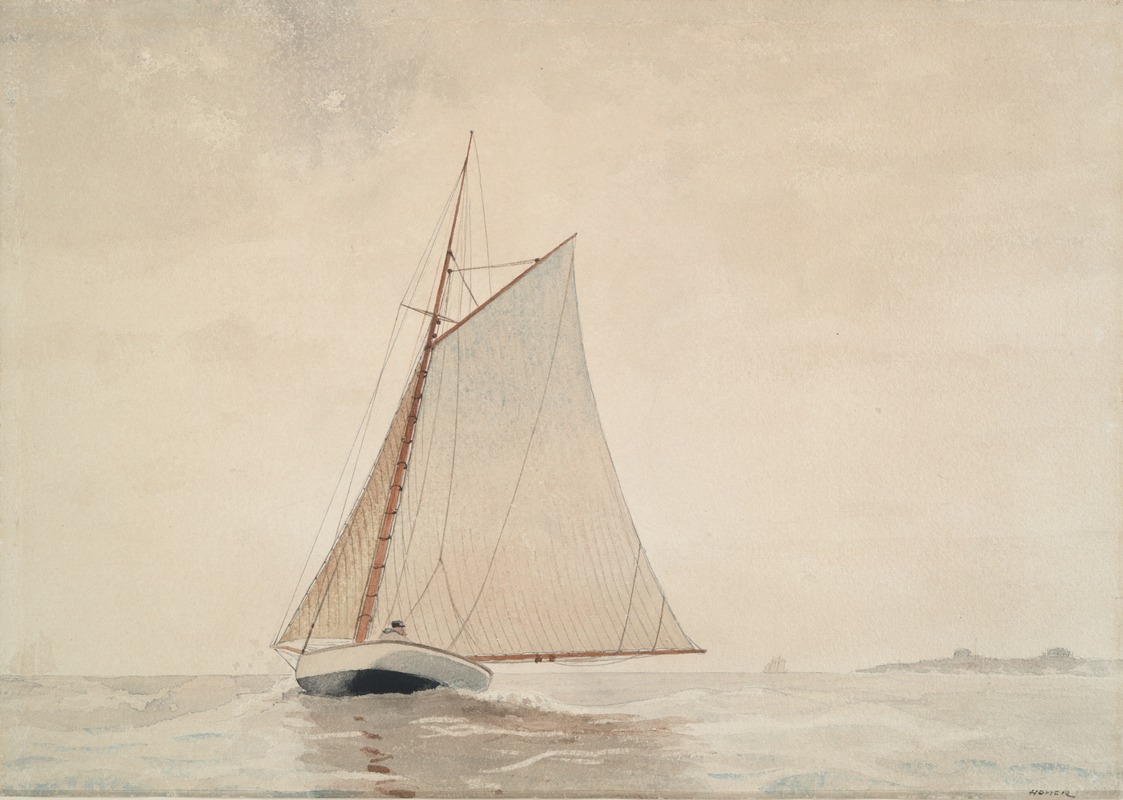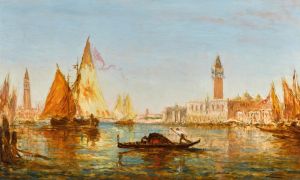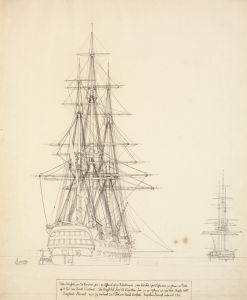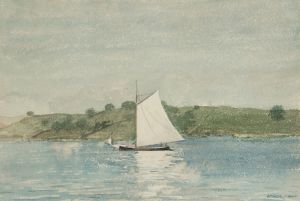
Sailing off Gloucester
A hand-painted replica of Winslow Homer’s masterpiece Sailing off Gloucester, meticulously crafted by professional artists to capture the true essence of the original. Each piece is created with museum-quality canvas and rare mineral pigments, carefully painted by experienced artists with delicate brushstrokes and rich, layered colors to perfectly recreate the texture of the original artwork. Unlike machine-printed reproductions, this hand-painted version brings the painting to life, infused with the artist’s emotions and skill in every stroke. Whether for personal collection or home decoration, it instantly elevates the artistic atmosphere of any space.
"Sailing off Gloucester" is a painting by the renowned American artist Winslow Homer, created in 1876. Homer is celebrated for his contributions to American art, particularly his marine subjects and depictions of the sea. This painting is one of his notable works that captures the essence of maritime life and the natural beauty of the American coastline.
Winslow Homer was born on February 24, 1836, in Boston, Massachusetts. He began his career as a commercial illustrator and later transitioned to painting, where he gained recognition for his realistic and vivid portrayals of American life. Homer's experiences during the Civil War as an artist-correspondent for Harper's Weekly significantly influenced his artistic development, leading him to focus on themes of human struggle and the natural environment.
"Sailing off Gloucester" is an exemplary piece that showcases Homer's skill in capturing the dynamic interplay between humans and the sea. The painting depicts a small sailboat navigating the waters off the coast of Gloucester, Massachusetts, a historic fishing town known for its maritime heritage. The composition highlights the boat's sails filled with wind, suggesting movement and the challenges faced by sailors.
Homer's use of color and light in "Sailing off Gloucester" is particularly noteworthy. The artist employs a palette that reflects the natural hues of the sea and sky, creating a sense of realism and immediacy. The interplay of light and shadow on the water's surface and the boat's sails adds depth and dimension to the scene, drawing the viewer into the experience of being at sea.
The painting is also significant for its representation of the American spirit of adventure and exploration. During the late 19th century, the United States was experiencing rapid industrialization and expansion, and the sea symbolized both opportunity and challenge. Homer's work often reflects these themes, portraying individuals in harmony with, yet at the mercy of, the natural world.
"Sailing off Gloucester" is part of a broader body of work by Homer that focuses on maritime subjects. His paintings from this period often depict fishermen, sailors, and the coastal landscape, emphasizing the connection between people and the sea. This focus on marine life and the coastal environment became a defining characteristic of Homer's later work, solidifying his reputation as one of America's foremost marine painters.
The painting is housed in the collection of the National Gallery of Art in Washington, D.C., where it continues to be appreciated by art enthusiasts and scholars alike. "Sailing off Gloucester" remains an enduring example of Winslow Homer's mastery of the marine genre and his ability to convey the beauty and power of the natural world through his art.


















